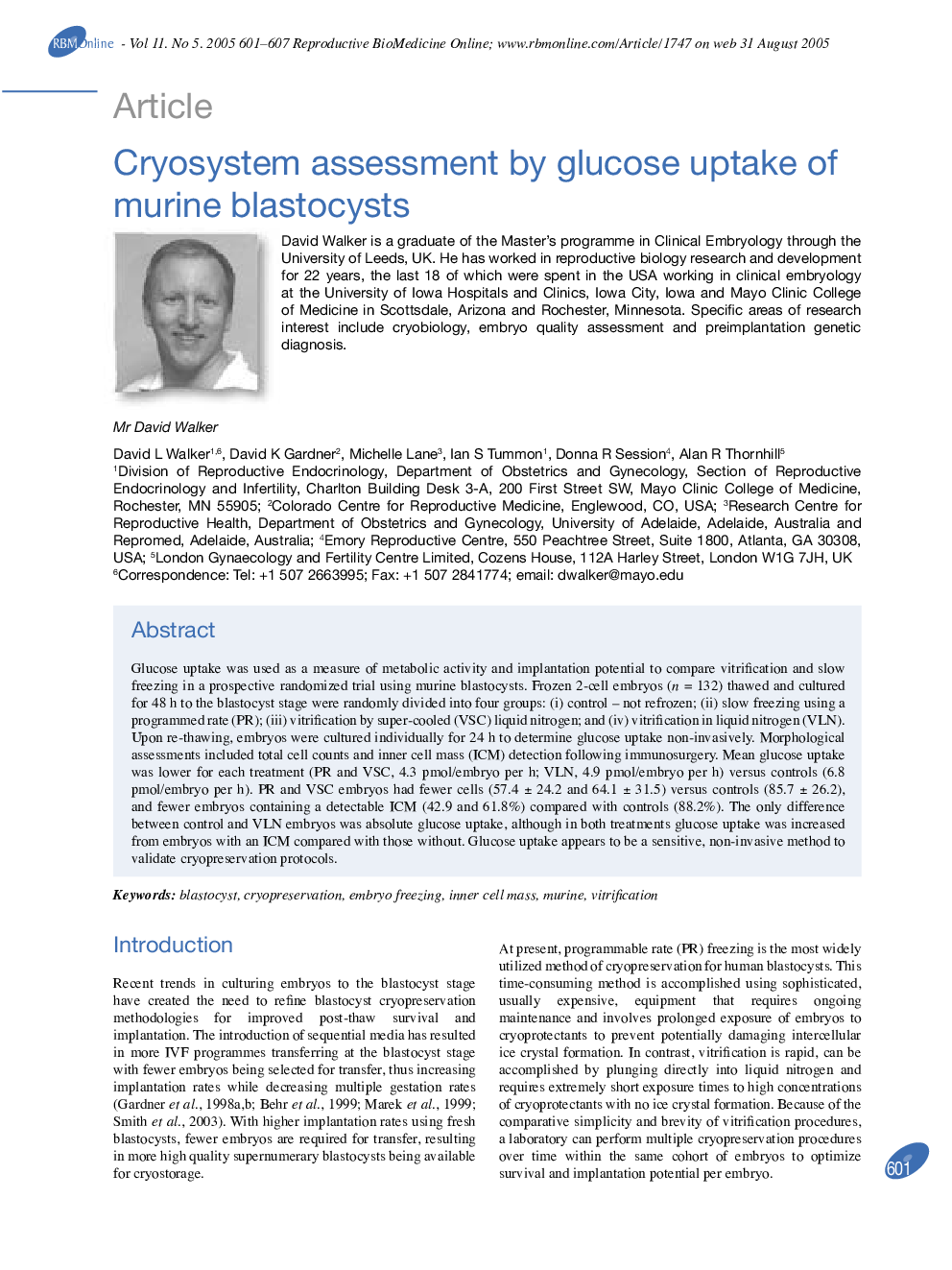| Article ID | Journal | Published Year | Pages | File Type |
|---|---|---|---|---|
| 9334880 | Reproductive BioMedicine Online | 2005 | 7 Pages |
Abstract
Glucose uptake was used as a measure of metabolic activity and implantation potential to compare vitrification and slow freezing in a prospective randomized trial using murine blastocysts. Frozen 2-cell embryos (n = 132) thawed and cultured for 48 h to the blastocyst stage were randomly divided into four groups: (i) control - not refrozen; (ii) slow freezing using a programmed rate (PR); (iii) vitrification by super-cooled (VSC) liquid nitrogen; and (iv) vitrification in liquid nitrogen (VLN). Upon re-thawing, embryos were cultured individually for 24 h to determine glucose uptake non-invasively. Morphological assessments included total cell counts and inner cell mass (ICM) detection following immunosurgery. Mean glucose uptake was lower for each treatment (PR and VSC, 4.3 pmol/embryo per h; VLN, 4.9 pmol/embryo per h) versus controls (6.8 pmol/embryo per h). PR and VSC embryos had fewer cells (57.4 ± 24.2 and 64.1 ± 31.5) versus controls (85.7 ± 26.2), and fewer embryos containing a detectable ICM (42.9 and 61.8%) compared with controls (88.2%). The only difference between control and VLN embryos was absolute glucose uptake, although in both treatments glucose uptake was increased from embryos with an ICM compared with those without. Glucose uptake appears to be a sensitive, non-invasive method to validate cryopreservation protocols.
Related Topics
Health Sciences
Medicine and Dentistry
Obstetrics, Gynecology and Women's Health
Authors
David Walker, David K Gardner, Michelle Lane, Ian S Tummon, Donna R Session, Alan R Thornhill,
